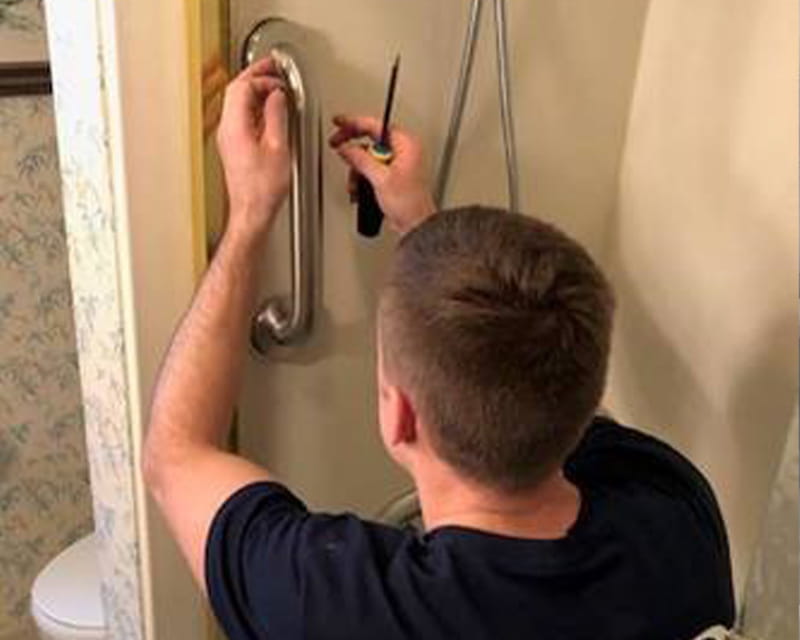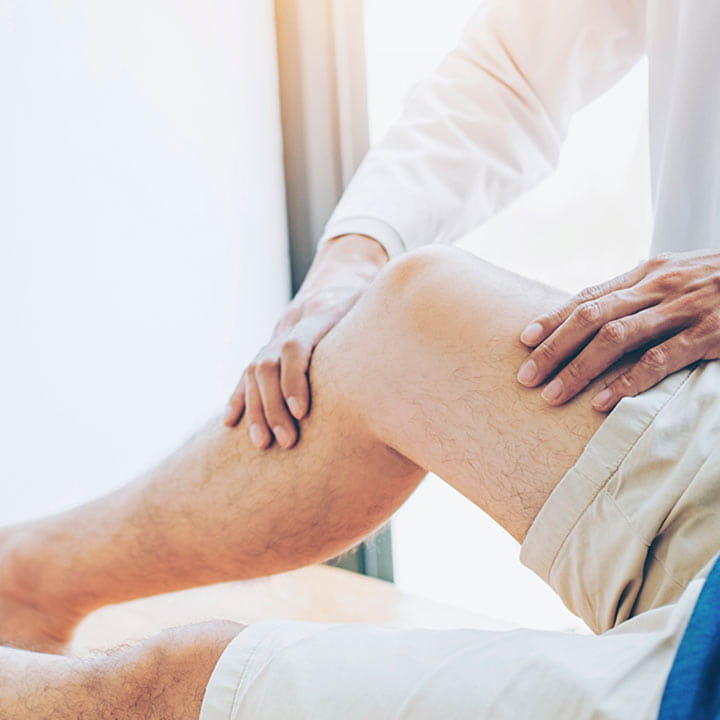
improving patient care
 The adult reconstructive surgery team at The Ohio State University Wexner Medical Center has created a novel way to manage and treat musculoskeletal (MSK) infections, especially those related to total hip and total knee replacements.
The adult reconstructive surgery team at The Ohio State University Wexner Medical Center has created a novel way to manage and treat musculoskeletal (MSK) infections, especially those related to total hip and total knee replacements.
The method is reducing costs and improving care for patients. About 1% to 2% of all joint replacements will be infected 10 years after surgery.
“This is a huge public health problem,” says Andrew Glassman, MD, chair of the Department of Orthopaedics. “The incidents of infected total hip and knee joint replacements are conservatively 100,000 a year, and that number is probably growing.”
Despite those figures, even a busy orthopedic surgeon may only see two to five patients with such an infection each year.
This fact, combined with modern surgical trends, can make treating MSK infections challenging to manage.
Many surgeons now practice in ambulatory surgery centers and not hospitals. When surgeons in an outpatient setting want to treat an MSK infection, they must assemble a team of experts, including infectious disease physicians and general, plastic and vascular surgeons. Coordination with radiology and pharmacy is also needed.
The Ohio State Wexner Medical Center sees more than 400 MSK infection referrals a year, Dr. Glassman says.
Five years ago, those referrals came in a random way that caused stress for patients and providers.
“We decided to approach this in a proactive and organized fashion and lend structure to it,” Dr. Glassman says.
So a team of clinical experts came together and put a lot of research into creating a new system. The goal was to provide consistent, high-quality care and reduce infection and death rates from MSK infections, says Douglas Chonko, DO, clinical associate professor in the Department of Orthopaedics in the Ohio State College of Medicine.
Over a five-year period, about 1% to 2% of patients undergoing a hip or knee replacement will develop a periprosthetic joint infection and 30% of those will die. These mortality rates are higher than those for many cancers, Dr. Chonko says.
The department surveyed 96 orthopedic centers with adult reconstruction fellowships to get information on how those centers manage MSK infections.
“We found wide variability in treating initial infections and in longer-term management,” Dr. Chonko says.
Data collected also showed that only 40% of centers had orthopedic surgeons assigned to be on-call for periprosthetic joint infections. At many centers, any surgeon on duty was allowed to treat a joint infection, often performing washouts that provided little benefit for patients.
The system the team developed works to understand a patient’s condition and immediately get them to the right level of care.
The new plan essentially designed its own transfer call center protocol. Any time a call comes in with a potential MSK infection, the referring doctor talks with an orthopedic surgeon right away. If the patient is stable, they’re seen in clinic the next day.
If the patient needs immediate care, they’re designated as a direct admission and can bypass the emergency department (ED). This reduces time and expense. Patients who take themselves to the ED are managed in the same manner as a referred patient.
The four surgeons who work in adult reconstruction and two from the hip preservation team take calls on a weekly basis.
“This way we have an expert who can talk to a nurse in the Transfer Center to help expedite patients and referrals,” Dr. Chonko says.
A direct dial line for area hospitals and referring surgeons also is available for immediate consultation.
The Ohio State Wexner Medical Center’s MSK infection program exists because of support from medical center leadership, administrators and academic leaders, Dr. Glassman says.
To further increase efficiency, the orthopedic reconstruction team formed an MSK infection group. Every needed specialist is ready as soon as a patient comes through the door. The hospital also provides a specific MSK infection inpatient unit staffed by highly trained nurse practitioners.
The MSK team includes infectious disease specialists, expert orthopedic and plastic surgeons and a venous access team. Together, the MSK infection team manages one or two cases daily.
The program team looks at MSK infections through a multifaceted lens:
“Our volume allows us to do this differently than any other hospital or facility out there,” Dr. Chonko says.
The expertise within the Ohio State Wexner Medical Center’s MSK team is getting national notice. Surgeons have been invited to present at conferences and have published insights about their work.
Despite our success, the Ohio State Wexner Medical Center still sees a 20% failure rate with hip and knee replacements in terms of eradicating infection and successfully implanting a new joint that doesn’t get infected. The goal is to get to a 0% failure rate.
Postsurgical care programs also work to avoid infection.
The joint reconstruction team partners with:
This type of care improves outcomes, Dr. Chonko says. Many patients are referred to the Ohio State Wexner Medical Center after multiple failed operations or procedures to cure their infections.
“Our results are improved over those seen in community settings and comparable with those at the highest volume centers in the U.S.,” Dr. Glassman says.
The orthopedic surgery team takes part in multiple innovative clinical trials.
“We are trying to learn how to achieve better results more economically with a higher success rate,” Dr. Glassman says.
Current studies underway include:
A future study will explore the use of bacteriophages, or viruses used to destroy acute and chronic bacterial infections in joint replacements.